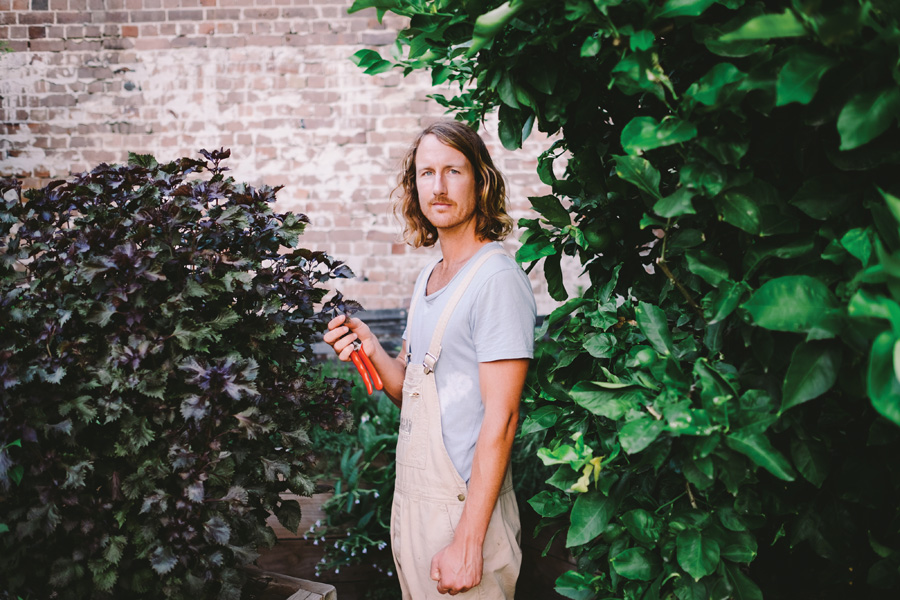Backyard Harvests
Urban Growers are taking small city spaces and turning them into urban-scale farms.
When Urban Growers’ founder Byron Smith moved from Sydney to the picturesque coastline of the Illawarra escarpment two truckloads went with him: one of furniture and the other, plants.
“I moved the equivalent amount of plants as I did furniture to the new house,” he admits. “When I get settled I intend to do a lot in the garden. I’ve got plenty of sun here, plus room for my bees and an edible garden as soon as spring arrives.”
Transporting his precious European honey bees to their new south-coast home has to be done under the cover of darkness once all the bees have returned to their hive and the entrances have been taped up securely.
“You have to move them more than eight kilometres, otherwise they will fly back to the old yard,” Byron explains. “After that distance I guess you could say their internal GPS is reset and they call the new place home. I’ll drive them down at night and then set up the hives, open the seals and in the morning they will be busy looking for new plants to forage on within an eight-kilometre radius.”
Edible plants, beehives and chooks: three elements of a productive garden that Byron likes to include if there’s space. He started his business, Urban Growers, with a friend, Grant Labrooy, while both were studying horticulture at Ryde TAFE just three years ago. For Byron, there were also short courses in permaculture and beekeeping, as well as an earlier diploma of environmental technology, a business diploma and a year of environmental science at university. All that study has provided a solid grounding for
Urban Growers – now run solely by Byron – which is dedicated to helping residents, along with small businesses such as cafes, and large corporate organisations like Qantas, to set up and maintain what Byron likes to call “urban-scale farms.”
“Biodiversity is important, especially in the urban landscape where we have so many hard surfaces,” he says. “I specialise in food plants because I do enjoy growing edibles, but there are many beautiful plants to grow. Gardens should be enjoyed regardless of the plant species.”
But it’s edibles that interest him most and about which he enjoys educating people. Even the smallest outdoor space can be used to grow food, as long as it gets some sun.
“When I walk into someone’s garden, I look to see where the sun is going to shine throughout the year as they are the hotspots for growing food. If there is sun on the ground that’s a good place for a raised garden bed, or some pots, or a fruit tree. Generally in the southern hemisphere a north-facing wall is going to catch sun as well, so we can grow vines up the face of that, or create a potted wall, which is good for annual and perennial herbs and flowers. If there’s still space left we can look at growing some vegetables – tomatoes, eggplant, capsicum – food plants that have long harvest times.
“And it’s also nice to have some structure; most people want some citrus, so a lemon or a lime tree is a useful addition. In courtyards that are exposed to western sun it’s good to provide some shade, so we can install a pergola and grow a deciduous plant or vine over that.”
Six hours of sun is needed for the effective growth of edible plants, but Byron says even south-facing gardens potentially will receive sufficient sunlight in summer, when the sun is higher in the sky, to grow a crop of leafy greens or fast-growing annuals like radishes. He also suggests considering the verge or nature strip on the street outside. If it’s on the northern side it may be turned into a productive garden, as long as the local council is on side.
“If Urban Growers can do anything, then one of my major goals is to improve the lifestyle of people living in the city through greening up their spaces with productive gardens, and educating and upskilling them to look after the gardens themselves in order to take back some level of food control. It’s enjoyable, good for the environment and brings people together.”











